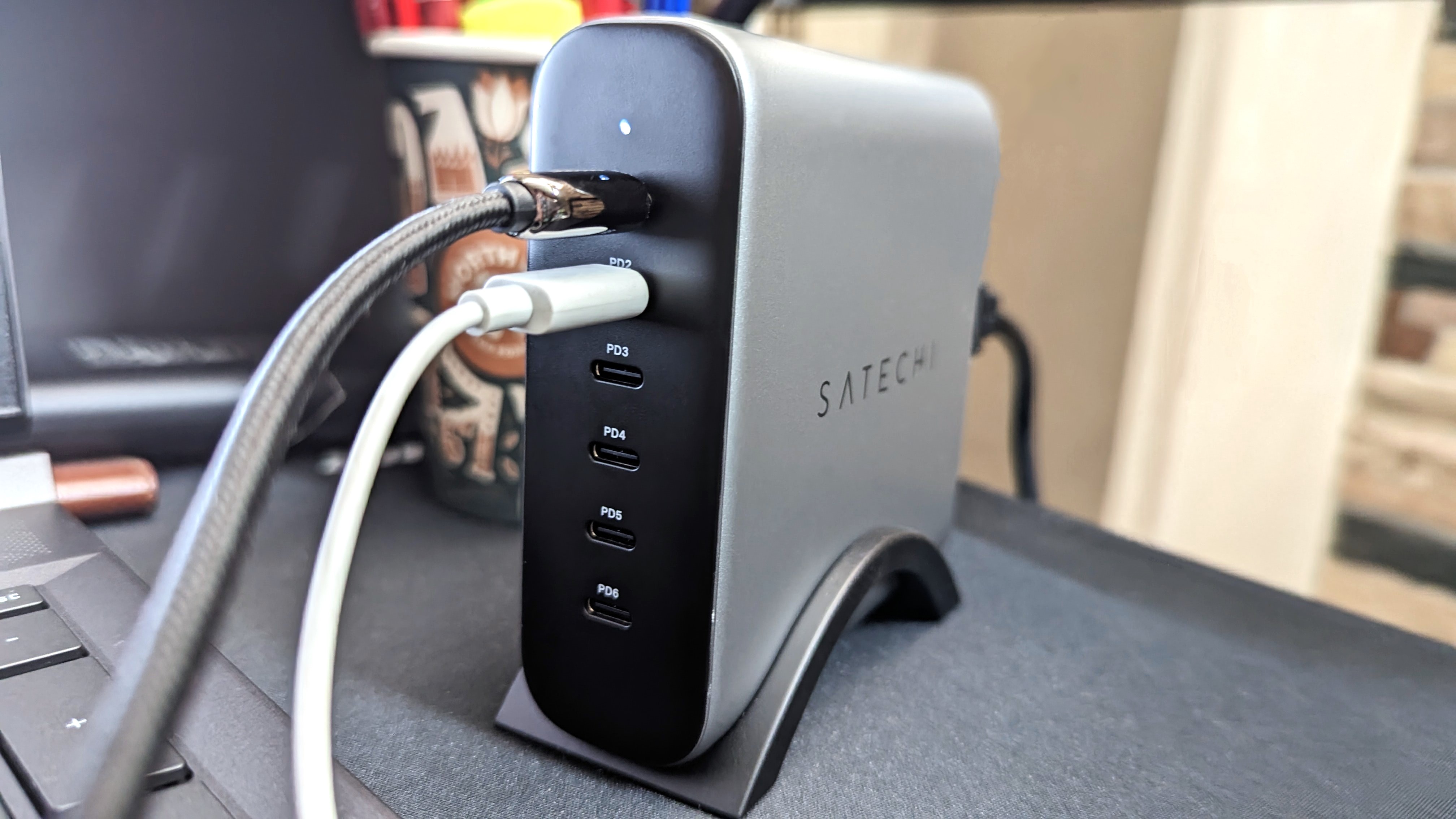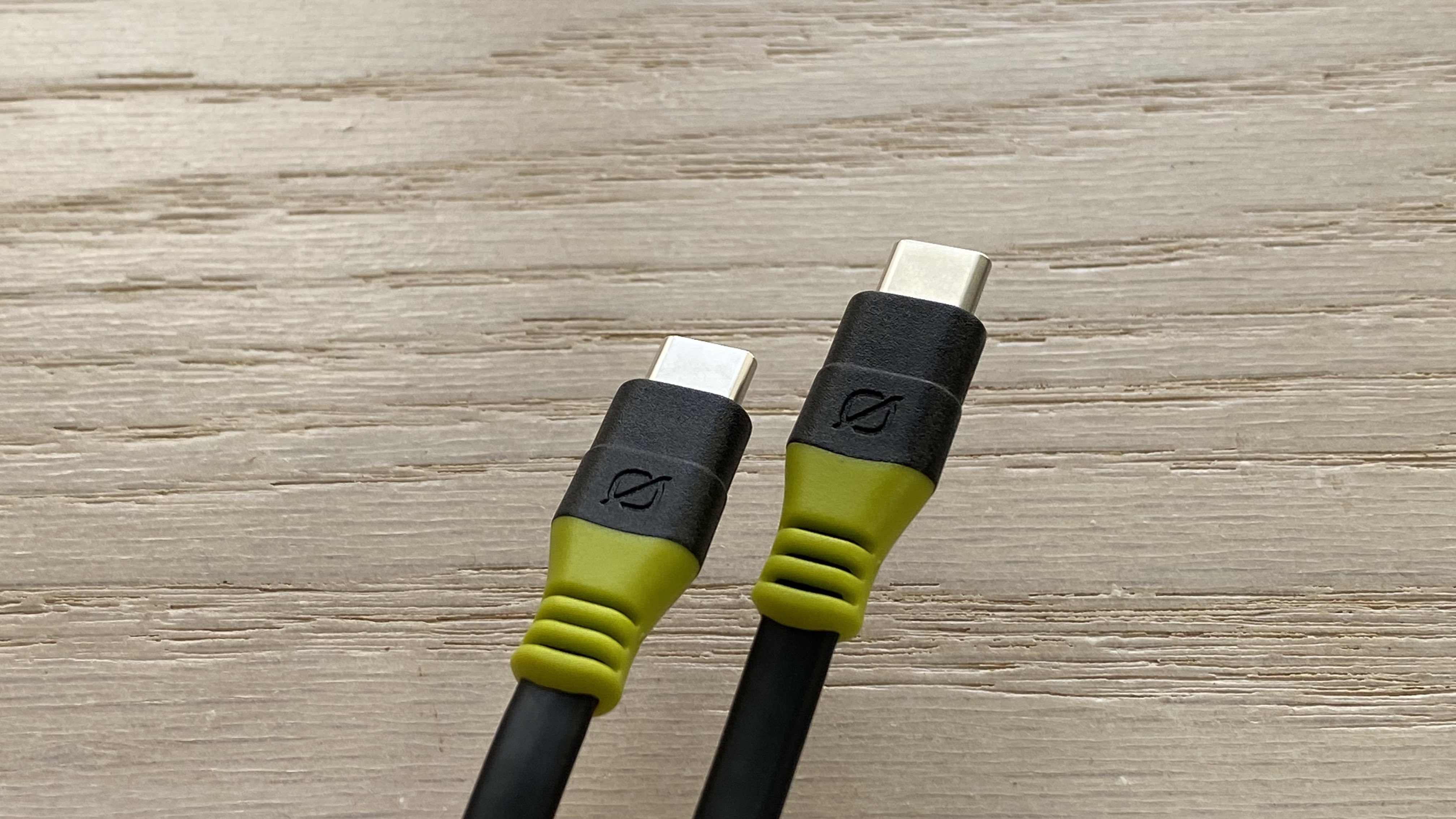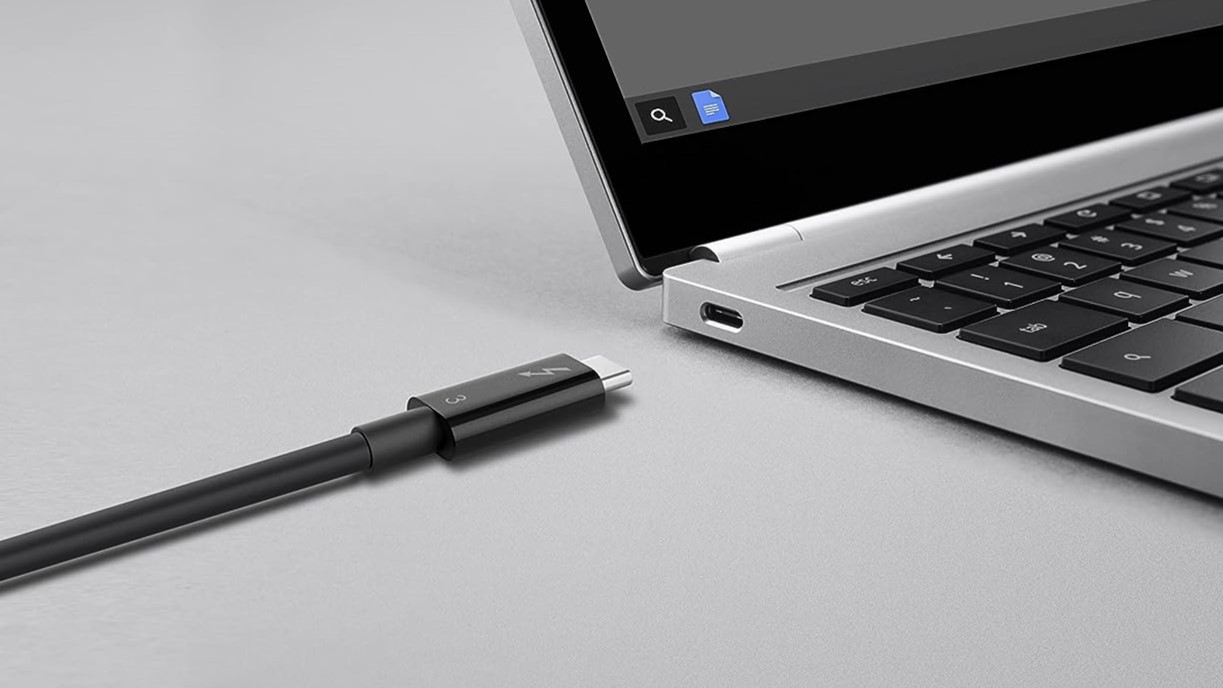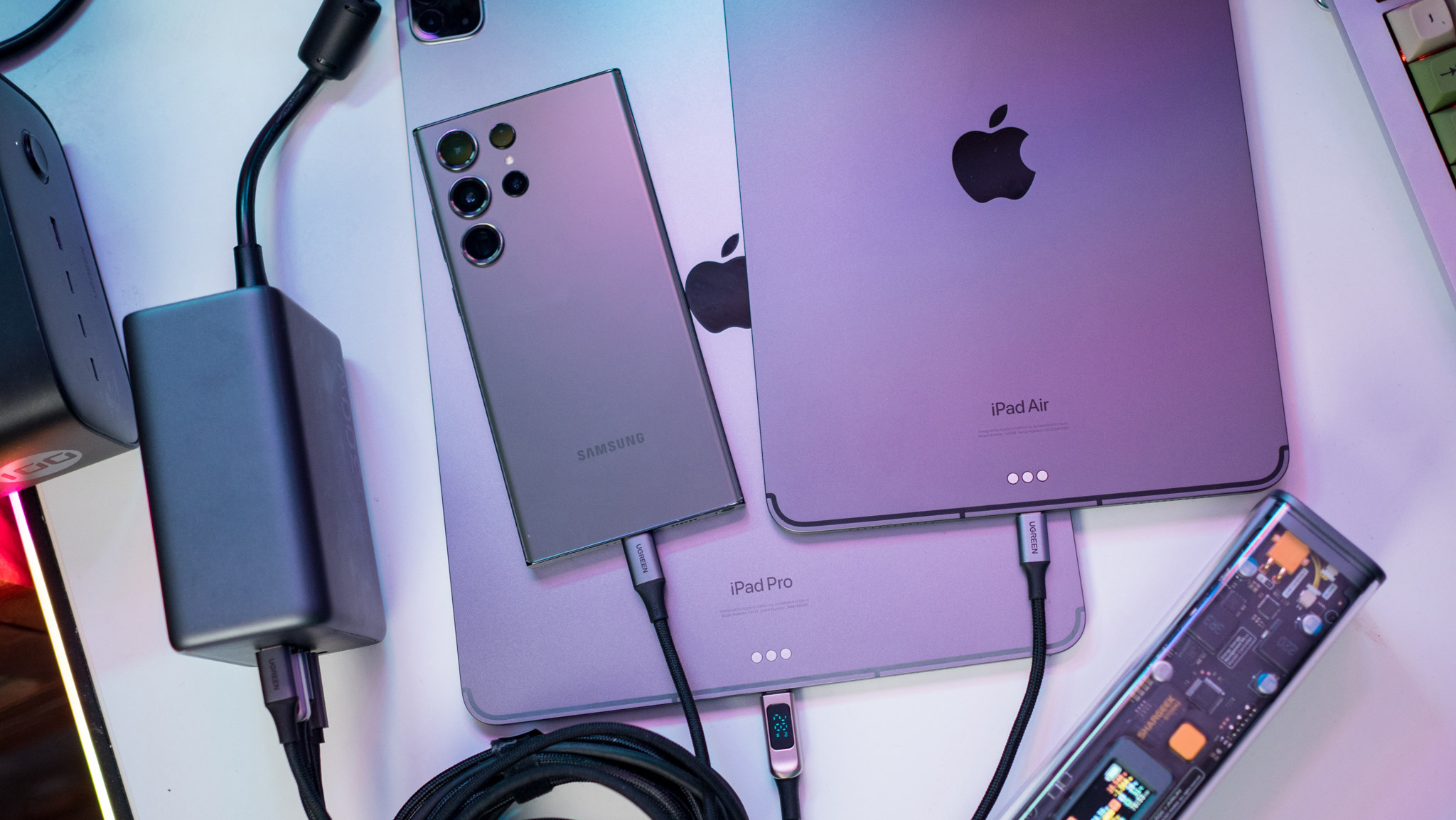USB Type-C FAQ — everything you need to know
One cable for all of your tech.

Most new phones, including iPhones, have moved to USB-C for data transfer and charging, making it easier than ever to make sure you’ve got the right cable in your bag to keep all of your tech running. Replacing MicroUSB on Android and Lightning on iPhone, USB-C has enabled faster charging and higher data speeds than this older standard supported. USB-C is also easier to plug in with its reversible connector and the same plug on either end of the cable.
Still, USB-C isn’t perfect, and it has become frustratingly tedious to determine the quality of an unknown cable. It can be impossible to know just how much power or how fast a USB-C cable is until you plug it in.
Why switch to USB-C?
Whether you want the upgrade or not, USB-C has quickly become the norm when it comes to computers, phones, and tablets. Its rounded design makes USB-C easy to plug in, and unlike USB ports of old, there’s no guessing which way is up. Like Apple’s Lightning port, USB-C can be plugged in upside down, so you don’t need to fumble with cables quite as much. If you’re plugging into one of the best USB-C charging bricks, you don’t even need to worry about which end is which with USB-C on both ends.
If you commute to work or just like to work from a coffee shop, using USB-C helps you simplify your daily carry as well. You can carry a single power brick that works with all of your USB-C devices, and some can even charge multiple devices at once. You also only need a single USB-C cable that can even be used with something like a portable SSD. Naturally, this extends to all other USB devices like game controllers, networking adapters, and even hubs to support more devices.
USB-C can also output audio and video, with some monitors taking a USB-C input directly and others only needing an adapter for HDMI or DisplayPort. For the most part, video resolutions up to 4K are supported at 30Hz but can be even higher with the right cable and device.
Are all USB Type-C cables the same?

Not at all. USB-C is, at the end of the day, a connector rather than a standard. If you’re buying a cheap cable to charge your devices, for example, you may find that you’re not getting your full charging speed. For example, in our review of the Sherpa 100PD from Goal Zero, we noted that the included USB-C cable only supported 60W charging and USB 2.0 data speeds. This is an annoying yet common way for many companies to save money.
While this is more likely with cheaper Android phones, even companies like Apple will choose the cheaper route with USB-C on its latest iPhone 15, a phone that starts at $800, only supporting USB 2.0 speeds of 480Mbps. Apple also sells a few USB-C charging cables with only USB 2.0 speeds, so if you’re not paying close attention, you could end up looking at a lot of loading bars.
Be an expert in 5 minutes
Get the latest news from Android Central, your trusted companion in the world of Android
Unfortunately, when it comes to buying a USB-C cable, it’s very common to see fast charging speeds paired with USB 2.0 speeds like this. These cables are cheap and are great for charging-only jobs, but struggle with large data transfers. Luckily, some of the best USB-C cables support both fast data speeds and charging, so you have some options. You’ll just want to double-check that you’re adding the right cable to your cart.
How fast is data transfer on USB-C?
As mentioned, USB-C is more of a connector rather than a standard, so USB-C cables and ports can have a wide range of capabilities. Many USB-C cables stick to the old USB 2.0 standard with glacial 480Mbps speeds that were underwhelming a decade ago and continue to be so. The USB 3 standard is faster but complicated, with speeds available at 5Gbps, 10Gbps, and 20Gbps.
And like the cables, your computer, down to the port you use, needs to support these faster speeds. To get those full 20Gbps, you’ll need a device that supports it in addition to a cable that’s compatible. In an article on the state of USB-C, Android Authority demonstrates just how fragmented USB-C has become with USB 4’s greater speeds at up to 40Gbps, not doing anything to help simplify USB with multiple speeds and power deliver specs of its own.
What is Thunderbolt?

It’s impossible to ignore Intel’s Thunderbolt technology that uses the USB-C connector. Thunderbolt 4, for example, also supports 4K video, but it can run two monitors at 4K 60Hz. Thunderbolt 4 also has more stringent requirements than USB-C, with a minimum of 40Gbps and 100W power delivery. You can also find Thunderbolt-certified cables to help you pick a quality cable.
Thunderbolt 5 kicks it up another notch with an 80Gbps bidirectional minimum transfer speed. Charging gets a bump to a whopping 240W with the right hardware as well. It also has double the bandwidth for external graphics cards, which are popular with gamers who don’t have space for a desktop. A compact dock and a laptop are still smaller than a high-end desktop if you need rendering performance on the go.
Thunderbolt isn’t perfect, with a much higher cost than USB-C alone, and really, it isn’t needed in most applications. Thunderbolt is also most often reserved for high-end computers that can better make use of the technology with things like docks, external GPUs, and ultra-fast storage.
Will my battery actually charge faster?
Charging speed on your device still comes down mostly to the power source and the device you’re charging. That being said, USB-C with PD and PPS has enabled high-speed charging on many devices with up to 240W supported on the latest standards. For phones, charging will stay under 100W for the most part, with many smaller phones like the Samsung Galaxy S23 sticking with a 25W maximum. On the other hand, the rest of the Galaxy S23 line supports speeds up to 45W.
Computers that use USB-C will charge much more quickly, with many supporting 60W speeds and some even more. MacBook laptops and Chromebooks, for example, use USB-C with much faster charging than most phones or tablets. This makes sense, as computers are much more power-hungry, especially if they have a dedicated GPU.
Finally, there are thermals. The fact of the matter is that pushing as much current into a battery as possible will cause it to heat up. Batteries must manage this heat by slowing down charging until full speeds can be supported again. Regardless of your USB-C cable or power supply, a battery can only take so much power at once and could also be a limited factor in charging speed.
Will I need new power adapters?

If you have a shoebox full of power adapters with USB-A ports, they’re not junk. You can use a USB-A to USB-C cable to keep using these power adapters. If they used a proprietary charging standard other than QuickCharge or PD, there’s a chance your new phone won’t support it and will fall back on slower speeds. Still, these are solid options for overnight charging or just keeping the battery topped up while you’re cooking.
Old chargers can be as slow as 5W, with newer QuickCharge options taking that up to 15W. Some fast chargers from the time before PD and PPS were standard may support higher speeds using voltages your phone doesn’t support, so you may see slower speeds with older proprietary tech than you were expecting.
To get the best charging speeds out of your devices, you’ll need a charger that has enough power to keep up. If you’ve got a desk full of tech like a laptop, tablet, and mobile accessories that you need to charge all at once, something like the UGREEN Nexode 300W will have no trouble keeping up. For the most part, you just want to make sure the power adapter you’re using has enough power to keep up with your device.
Are you sure this USB-C thing isn't a fad?
Despite its problems, USB-C is still one of the most cohesive ports we’ve ever had in computing, and there’s no doubt that it’s here to stay for quite a while. It can be a drag to replace cables and power adapters throughout your home every time a new standard comes out, but with USB-C, you get the benefit of being part of a massive ecosystem that is shared by some of the biggest tech companies like Samsung, LG, Sony, ASUS, and Apple.
Not only that, but USB-C will likely be forward-compatible the same way USB-A is, with only a simple adapter needed to work. It’s also worth keeping in mind that there’s still strong support behind improving USB-C with USB 4 and Thunderbolt 5 making use of the connector. Whether you want to be a part of Google, Microsoft, or Apple’s ecosystem, you’re going to need to use USB-C to make the most of it. USB-C is here to stay, and despite its flaws, thank goodness it is.
When Samuel is not writing about networking or 5G at Android Central, he spends most of his time researching computer components and obsessing over what CPU goes into the ultimate Windows 98 computer. It's the Pentium 3.

